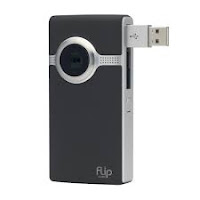What have you learnt about technologies from the process of constructing this product?
Apple iMac
 Trying to adjust my abilities from using a Windows PC to an iMac was a short term problem I was able to overcome. This is due to the fact that I also take A Level Photography, which requires Apple iMac's to also be used due to the programming being more easier to use alongside Apple software.
Trying to adjust my abilities from using a Windows PC to an iMac was a short term problem I was able to overcome. This is due to the fact that I also take A Level Photography, which requires Apple iMac's to also be used due to the programming being more easier to use alongside Apple software.
My skills acquired from photography lessons have also helped me to able to use Photoshop. This was useful in the making of the production company logo and my film poster in evaluation 5.
Having this advantage meant that I could help others with any computer queries my peers had.
Final Cut Pro X
Final Cut Pro X is a much more advance editing software compared to others that are out there such as Windows Movie Maker. Final Cut Pro X is fast, so easy to work your head around and provides slickly-edited videos. The only barrier that people can found themselves stuck in is that it is very hard to know where everything is and all
the shortcuts that are at hand to use. The ability to blade music and clips to the very millisecond you want to helped 100% in our final product, producing a very slick thriller opening. We may have started off with long, unwanted raw clips, but by the end, we were left with all the bits we wanted, in the places we wanted along with credits made with a very simple yet sophisticated font.
the shortcuts that are at hand to use. The ability to blade music and clips to the very millisecond you want to helped 100% in our final product, producing a very slick thriller opening. We may have started off with long, unwanted raw clips, but by the end, we were left with all the bits we wanted, in the places we wanted along with credits made with a very simple yet sophisticated font.
Canon DSLR 650D
We used the Canon DSLR 650D when filming both the preliminary task and the final product of the thriller opening. The quality of recording is high, meaning that we were left with a high quality final product. The quality is staggeringly different to that of cameras found on mobile phones such as iPhone or Samsung, webcams on the Mac's and flip cameras.
Skills I also used in practise in Photography that I learnt in class were: rule of thirds, white balance, manual focus and how to balance the focus, zoom.
Flip Cameras
 In order to create some podcasts, interviews or focus group recordings, a flip camera was used. The flip cameras are easy to use and raw footage is simple to export off of the camera and onto desktop as it has a built in USB. The only down-side to the flip camera is that it doesn't provide the best quality, but this isn't too much of a worry for podcasts or anything of that sort as it is the information within the video that is vital.
In order to create some podcasts, interviews or focus group recordings, a flip camera was used. The flip cameras are easy to use and raw footage is simple to export off of the camera and onto desktop as it has a built in USB. The only down-side to the flip camera is that it doesn't provide the best quality, but this isn't too much of a worry for podcasts or anything of that sort as it is the information within the video that is vital.Lighting
Prior to filming for our thriller opening, we produced a video of three-point lighting (which can be found on YouTube). This helped with an understanding of the lighting used in most soap operas, however, we did not utilise this into our thriller opening as we planned to use natural lighting to present across the time of day and show the differences between the protagonist and antagonist and the differences between the world going on by outside and what was happening indoors, inside the house.




No comments:
Post a Comment